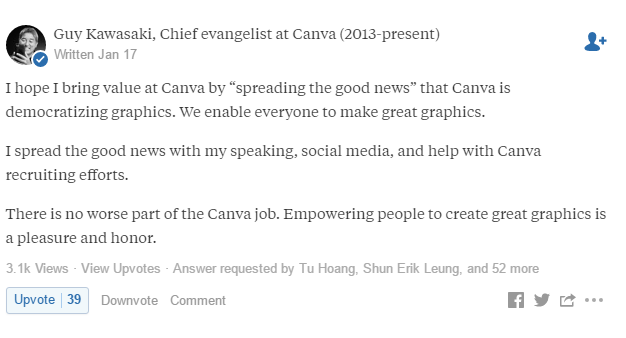How many “types” of marketing have you ever come across? And how many of them do you really understand? It is essential to be able to differentiate between types of marketing and use those that are actually beneficial for your brand (and those you really understand the meaning of).
Have you familiarized yourself with our text about marketing acronyms? If not, it’s not too late to get into them… and then jump into this article. We are going to cover quite a few marketing definitions – and don’t feel bad about not knowing them. Always better late than never, so we hope our list will be useful for all you marketing wannabes.
AFFILIATE MARKETING
Paying or receiving money from referral links (clicks to website, purchases, adding to carts) and affiliate programmes (5-15% of revenue from each sale/visit can go to an affiliate partner).
AMBIENT MARKETING
Placing advertisements in places most people wouldn’t think about placing ads. Advertising in an unusual way, with unusual items, in unusual places.

AMBUSH MARKETING
This is focused on referring to an event without being an official sponsor or partner of it. Marketers win over customers hearts by doing marketing activities that surpass the original event. Want an example? Samsung’s opening of a stand in Australia, near an Apple Store, when a new iPhone was being introduced. Samsung offered their new phones for 2$ each, in the end generating more engagement and interest than Apple’s event. Ambush marketing is also widely used in sports – a lot of battles in the brand war between Adidas and Nike are actually examples of this type of marketing.
BEHAVIORAL MARKETING
Marketing based on people’s behaviours. This marketing involves analysing these behaviours and initiating marketing campaigns that reflect or refer to their activities and actions.
BUZZ MARKETING
Generating a buzz around your product or services – making people talk about it, share your content, or partake in your marketing activities.
CAMPUS MARKETING
A special kind of marketing focused on students and universities. It’s very often held on campuses where students spend a lot of time, making them easily reachable with marketing campaigns. This kind of marketing is often maintained by students themselves – they play the role of campus and brand ambassadors.
CAUSE MARKETING
This type of marketing is beneficial for both businesses and their audience – finding a good cause to support as a company and advertising it to your target group. This spreads the message of the good cause, but also the activities of a business and their branding.
CLOSE RANGE MARKETING / PROXIMITY MARKETING
Using technologies such as Bluetooth or WiFi, marketers send messages to the smartphones or tablets of customers who are near their business.
CLOUD MARKETING
A type of marketing in which all marketing resources are allocated online. This is so they can be easily changed by clients or affiliates, as well as using SaaS applications for marketing.
COMMUNITY MARKETING
Marketing around building and managing a community – engaging an audience, answering their needs, and bolstering loyalty among the existing brand community. And attracting some new potential customers in the process.
CONTENT MARKETING
Giving added value to customers by publishing valuable and useful pieces of content and distributing it through the Internet and on the company’s social media platforms, website, or blog. This content can also be published in the form of an FAQ/knowledge base (take a look at ours for an example), interactive presentations, and attractive infographics.
DATA-DRIVEN MARKETING
Using analytics to make marketing decisions, manage marketing activities based on gained data. Sotrender is a tool that would be very useful for this purpose.
DIVERSITY MARKETING
Marketing that attempts to reach different cultural groups in selected target groups, taking into account cultural differences in planning marketing communication.
DOOR-TO-DOOR MARKETING
Direct marketing involving salespeople who usually try to visit clients’ houses and sell them products directly.
EVANGELISM MARKETING
Marketing involving clients and fans who become brand advocates and ambassadors, spreading the love of your brand, products, or services and represent them, even if they aren’t getting paid. They are also called “Brand Lovers” by some.

FREEBIE MARKETING
Marketing based on giveaways, giving samples/full products to potential customers and clients for free to promote a company.
GREEN MARKETING
Marketing that puts the environment first and marks products or services connected with ecology and being environmentally friendly.
GUERILLA MARKETING
An unconventional way to promote a business and make it visible. Guerilla marketing needs a lot of creativity rather than high marketing budgets, with marketing activities done mainly in public places to attract as many people as possible at a low cost.
INBOUND MARKETING
Making an impact on customers via prepared and published content, blogs, SEO, social media activities, and events instead of calling and pulling them in by advertising and selling.
INFLUENCER MARKETING
Marketing based on involving bloggers, journalists, or (increasingly more often) digital influencers (for instance – Instagram users) for marketing purposes managed by the brand. Influencers often have huge and engaged audiences, many of them being the target group for companies who want to make the most of their reach.
IN-GAME MARKETING / ADVERGAMING
Marketing, advertising, and promotions set in computer or video games – some games were made specifically because of the product they were meant to advertise, while others involve some parts of a brand’s visual identity or advertising.

INTEGRATED MARKETING
This is the process of coordinating multiple tools, channels, platforms, and activities for a business’ marketing needs.
LOYALTY MARKETING
Marketing focused on increasing the number of retained current customers instead of acquiring new ones, putting loyalty first by offering e.g. rewards programs.
MULTI-CHANNEL MARKETING
Marketing that uses various and multiple channels to increase the reach of their activities and therefore having more people coming into contact with it.
NICHE MARKETING
Marketing directed to smaller and more specific groups within an audience.
OUTBOUND MARKETING
Marketing that functions the opposite to inbound marketing: focused on communication via cold calls, cold emailing, and adverts.
PERFORMANCE MARKETING
Marketing in which what matters most is ROI and metrics or statistics that reflect performance. Those factors are taken into consideration while making further marketing decisions and planning more activities.
POINT-OF-SALE MARKETING
Advertising to customers at the “point-of-sale” – the point where they can see, touch, and familiarize with the selected product.

PULL MARKETING
Marketing focused on communicating with the end customers without involving anyone in the middle. Creating needs and a desire to purchase a product or use services, therefore increasing sales.
PUSH MARKETING
In push marketing, the whole chain of distributors and dealers is used to get to the end customer, and it often consists of direct selling and promotion.
REAL-TIME MARKETING
Referring to market needs and desires in real-time, reacting to ideas and live events, and adapting your actions to them.
We covered real-time marketing more in-depth in our blog posts.
REFERRAL MARKETING
Promoting products or services to new customers via referrals, sometimes even outside the control of a marketing strategy.
REMARKETING
Marketing based on connecting customers or potential customers who made a specific action on your website or just simply entered it. By communicating to them, using targeted and personalized adverts as well as referring to their behaviour on the website, a brand can complete deals and increase sales.
SCARCITY MARKETING
Marketing that makes people scared of missing out on an opportunity of purchasing a product. It’s often seen as “buy now before it sells out!”, often found in email marketing or direct selling.
SOCIAL MEDIA MARKETING
Marketing done on social media platforms and involves all activities across selected channels. Successful social media strategy involves not only properly planned activities, but also observing trends, analytics, and optimization. Sotrender can help with that.
TEST-DRIVEN MARKETING
This type of marketing is based on constant testing and optimizing to find the best solutions that work for a brand.
UNDERCOVER MARKETING / STEALTH MARKETING
“Hidden” marketing activities that appeal to customers but are not revealed as a part of the marketing strategy of a brand. It’s rarely a core strategy, but still, a brand can benefit from it. One of the most successful campaigns was done in 2002 when Sony Ericsson released a brand new series of phones and involved some actors to play the role of fake tourists and ask for photos taken using this new phone – so it could amaze and impress the people taking the photos. It often refers to guerilla marketing too.

VIRAL MARKETING
Marketing involving the creation of content or information about products, services, or a company in a way that encourages others to mention and share it. This is so it can reach as many people as possible.
WORD-OF-MOUTH MARKETING (WOMM)
Marketing based on oral or written recommendations made ideally by satisfied customers. This is meant to spread a marketing message about your brand, products, or services.
YOUTH MARKETING
Marketing focused on reaching youth, often using the newest social media platforms like TikTok.
Would you like to add some more definitions to our list? Feel free to throw your ideas in the comments! 🙂




